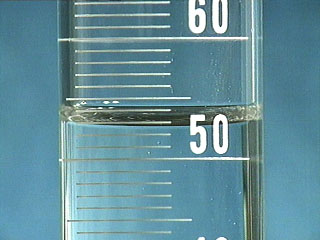E85 and Ethanol and how it affects your vehicle's performance
E85 is a blend of 85 percent Ethanol, a grain-alcohol made from corn, and 15 percent gasoline. This mixture gives the fuel a much higher octane rating than gasoline, and is cheaper than pump gas, race gas, or methanol.
For maximum power, the air/fuel mixture for E85 is ideally about 30 percent richer than for gasoline alone. (For reference, the stoichiometric air/fuel ratio for gasoline is 14.7:1, but only 9.8:1 for E85.) Fuel economy suffers by about the same percent. The fuel-heavy mix has a cooling effect, allowing for more timing and compression and also increases the mass of the exhaust for quicker turbo spool. The addition of alcohol to gasoline in such a high percent gives us a significantly higher octane rating, which is posted as 105 at the pump.
A downside to E85 is that it is hydroscopic (absorbs moisture). You may have noticed how rubbing alcohol leaves your skin white and dry. This fuel craves moisture the same way. It pulls water from the atmosphere and carries it into the fuel system. Water isn't necessarily a detriment to power, but it can cause premature failure of fuel system components along the way. Water accelerates oxidation, and can destroy fuel lines, pumps, and filters from the inside.
Another one of E85's downfalls is that the government doesn't control its content very closely. The assumed 85 percent ethanol is no guarantee of its actual content. Winter blends of the fuel can be as low as 70 percent to accommodate cold-starting conditions. Government mandates that the mixture must be between 70 and 90 percent. With a late-model, fuel-injected, flex fuel car built to accept E85, the difference isn't noticeable. However, when E85 is used on vehicles not equipped with the proper Ethanol percentage sensor there is no compensation for this fluctuation. The consistency of the fuel ultimately determines the consistency of the engine's performance as well as the level and aggressiveness of the tune (parameters of the electronic Engine Control Unit or ECU that control the amount of fuel, ignition timing advance, and/or turbocharger boost pressure, etc.) .
Interestingly, in order for the gas companies to avoid paying a liquor tax, they denature the alcohol. This 2 percent of poison added to achieve the denaturing element is only hoped to burn, not formulated to complement the alcohol. People in the racing fuel industry refer to this poison as "refinery drippings."
Aside from the changes in the mixture ratio, the gasoline side of the equation is hardly monitored at all. As with the blend percent, gasoline changes by season, and there are no minimum octane level requirements. Unlike gasoline, E85 is not required to have any additives to protect your engine or improve its burn.
Why you should know your Ethanol percentage of your fuel
E85 means a fuel blend that it 85 percent ethanol and 15 percent gasoline. But, the E85 brand label does not mean the fuel in the pump is necessarily 85 percent ethanol. In some cases, during most of the year, E85 pumps sell fuel that is really E70
There are three volatility classes for ethanol (designated 1, 2, and 3). Class 1 is summertime E85, and needs to have a minimum of 79 percent ethanol (so even E85 doesn't have to be E85). Class 2's ethanol minimum is 74. And Class 3, wintertime ethanol, is 70 percent. In some parts of the country, Wyoming, for example, Class 3 is sold from October through May and Class 1 is sold only in July and August. You can find what fuel is sold when in your state in the Department of Energy's "Handbook for Handling, Storing and Dispensing E85" (which you can download HERE in PDF form) on pages 22 and 23.
Operating instructions for E85Tester.com Ethanol percentage tester
1. Remove lid from test tube, hold tester upright or place on flat surface.
2. Fill tester with water to ----WATER----- graduation.
3. Fill tester the rest of the way with fuel sample* to -----100%----- graduation.
4. Replace lid of tester and tighten lid hand tight.
5. Shake for 3 seconds to mix the water with the fuel sample.
6. Let rest for about 10 minutes to allow the fuel to separate.
7. Read the percentage of Ethanol contained in the fuel sample by the numbered graduations on the tester.
* CAUTION: The glass tester is breakable and the contents (fuel) are flammable.
Accurate measurement using a graduated cylinder
A characteristic of liquids in glass containers is that they curve at the edges. This curvature is called the meniscus. Accurately measure the level at the horizontal center or inside part of the meniscus as viewed perpendicular to the graduated cylinder. With water in glass, the meniscus will curve up at the edges and down in the center so we say you read the bottom of the meniscus.


